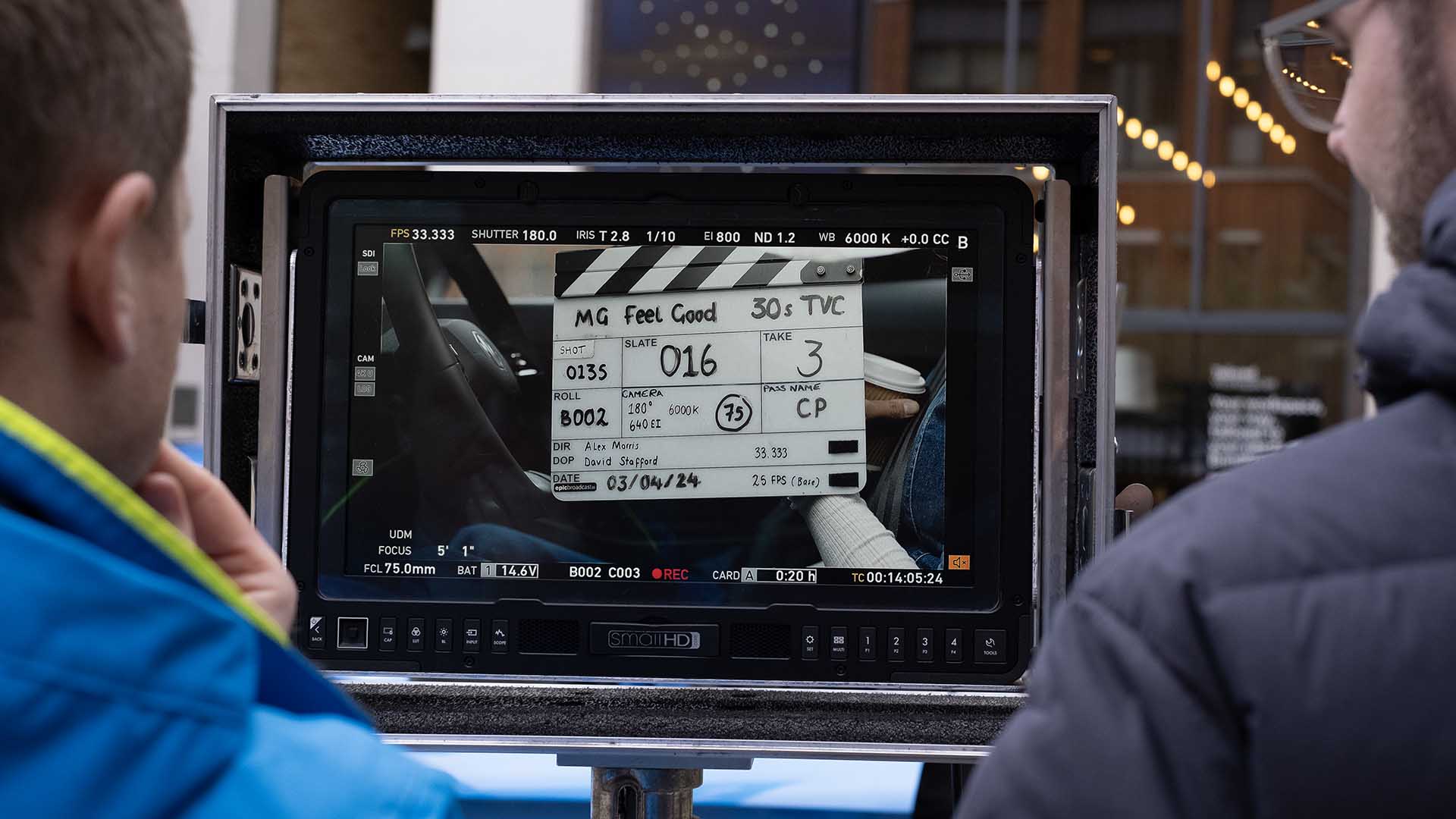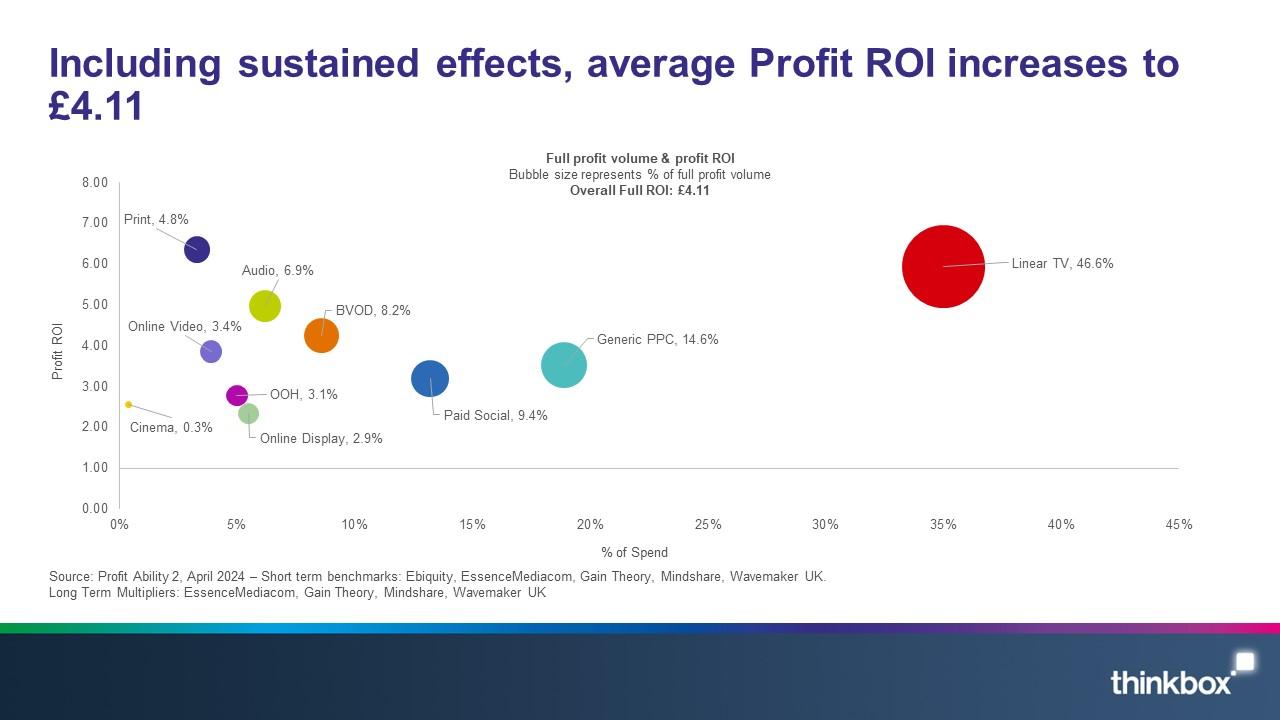
How Much Does It Cost To Advertise On TV?
TV advertising is one of the best ways to get your brand in front of a big audience. However, before you dive in, it’s natural to ask, “what does it cost to advertise on tv?”
And we get it. TV advertising is a big deal, and understanding the cost of a TV advert is essential to managing expectations, planning budgets, and ensuring your investment delivers real results. It’s not just about creating something visually stunning, it’s about knowing exactly where your money is going at every stage, from production to airtime.
Lambda Films is an established UK video production company. Over 15 years, we’ve worked on all sorts of TV adverts, from big, bold campaigns to more personal, emotive stories. Along the way, we’ve learned a thing or two about what it costs to get an advert on TV in the UK, and how to make every penny count.
This guide is our way of sharing that knowledge, so you can plan smarter, stay on budget, and get the results you’re after.
Contents
Is TV Advertising Worth It In 2025?
The Stages of TV Advertising Costs
Factors That Influence TV Advert Costs
The Cost To Advertise on TV: Example Budget Ranges
TL;DR? Request A Quote
If you are fairly familiar with the requirements of your TV campaign, then feel free to request an estimate below. We need to gather some specific details from you, but should be able to give you a projected cost to help with your planning. Simply click below.
Is TV Advertising Worth It in 2025?
According to the Profit Ability 2 study from Thinkbox, TV advertising continues to offer robust returns, with short-term profit ROI averaging £1.87 for every £1 spent.
Long-term campaigns (14 weeks to 2 years) see this figure increase to an average of £4.11 per £1 spent.
TV stands out as a channel that consistently provides both immediate and long-term returns, surpassing many other forms of media in overall profit contribution.
According to Thinkbox’s TV Viewing Report (2023), TV advertising made up an impressive 84% of all video advertising viewed daily in the UK, including video ads watched online and across social media platforms.
Nielsen’s studies show that TV advertising remains the most trusted form of advertising among consumers, significantly influencing purchasing decisions.
• Short-Term Impact: TV advertising generates significant returns within the first 13 weeks following a campaign launch.
• Long-Term Impact: Sustained brand recognition contributes to incremental sales over months and years, delivering a multiplier effect of approximately 2.2x across all sectors
• Market Share Impact: Linear TV accounts for nearly half (46.6%) of the profit generated by all advertising efforts.

The Stages of TV Advertising Costs
1. Production Costs
Before your advert can hit the airwaves, it needs to be created by a tv advertising agency. Production costs can vary widely depending on the complexity and ambition of the advert.
These costs typically include a variety of video production services such as storyboarding, scripting, casting, filming, editing, sound design, and any visual effects or animations.
2. Media Buying Costs
Once your advert is ready, you need to pay for the airtime. These costs depend on several factors:
• Regional Campaigns: Advertising in smaller regions is more affordable, while major regions like London command higher fees.
• National Campaigns: For national coverage in the UK, prices are steeper, particularly for high-profile slots during popular programmes.
• Channel Selection: Costs differ across broadcasters, with ITV, Channel 4, and Sky offering varying pricing structures.
3. Scheduling Costs
The timing of your advert plays a major role in determining costs:
• Prime Time vs Daytime: Evening slots during peak viewing hours cost significantly more than daytime slots.
• Seasonal Factors: Prices rise during high-demand periods, such as the run-up to Christmas or during major sporting events.
Understanding these stages will give you a clearer picture of where your money will go and help you decide how to allocate your budget effectively. Balancing your production ambitions with smart media buying decisions is the key to a successful TV advertising campaign. For a full breakdown of the process, have a read of our article Brief To Broadcast: The TV Advertising Process.
Factors That Influence Media Costs
The cost of buying airtime for your TV advert isn’t a one-size-fits-all figure. Several factors influence the price, and understanding these can help you make smarter decisions when planning your campaign. Here are the key considerations:
1. Time of Day
When your advert airs plays a significant role in the cost to advertise on TV.
• Prime Time: Evening slots between 7 pm and 11 pm are the most expensive due to higher viewership.
• Daytime: Airing during the day (9 am to 5 pm) is more affordable but reaches a smaller audience.
• Late Night: Overnight slots are the cheapest, though the audience is limited and niche.
2. Seasonality
UK TV advertising costs fluctuate throughout the year.
• Peak Seasons: Expect higher rates during busy periods like Christmas, Black Friday, or major sporting events like the World Cup.
• Quieter Periods: Outside of these peaks, you may find more affordable rates and better availability for slots.
3. Regional vs National
The geographical targeting of your TV advert significantly influences the cost of TV advertising and campaign effectiveness.
• The ITV regional framework offers 15 advertising macro-regions, allowing precise targeting. Costs depend on the region’s population size and viewer demographics.
• Channel 4’s regional TV network is divided into 6 macro-regions of larger geographical areas.
• Sky Adsmart offers a range of over 90 mosaic profiles across 32 regional and metropolitan areas.
• National coverage cover the entire UK, offering extensive reach but at higher costs.
4. Audience Demographics
The audience you want to target impacts the cost to advertise on TV.
• Channels and programmes that attract specific, high-value demographics (e.g., families, young professionals) charge a premium.
• Advertisers often pay more to reach harder-to-reach or more affluent audiences.
5. Programme Popularity
The more viewers a programme attracts, the higher the cost of TV advertising during its airtime.
• High-profile shows like reality TV finales, major sports events, or prime-time dramas command premium pricing.
• Less-watched programmes, even during prime time, will cost less.
6. Channel Selection
Different broadcasters cater to different audiences, and their rates reflect this:
• Major players like ITV and Channel 4 charge higher rates due to their reach and reputation.
• Smaller or niche channels often offer more cost-effective options for reaching targeted audiences.
Understanding these factors allows you to tailor your campaign to fit your budget while still reaching your desired audience. A well-timed, strategically placed advert can save costs without compromising impact.
Production Costs
Start your campaign the right way by partnering with a video production agency that knows how to turn creative ideas into impactful results. At Lambda Films, we understand that an eye-catching, memorable advert is the key to maximising the value of your TV campaign. Whether you’re working with a big budget or something more modest, choosing an experienced team means you’ll get a production tailored to your goals and audience. Be open about your objectives, and we’ll find smart, creative ways to make your budget work harder for you. Want to start the discussion? Drop us a line.
1. Low-Budget Productions
• What to expect: Simple, straightforward TV adverts often featuring minimal locations and actors, or simple animations.
• Typical costs: Starting from around £5,000 to £30,000.
Best for: Small businesses or brands looking to dip their toes into TV advertising without overcommitting.
2. Mid-Range Productions
• What to expect: Professionally shot live-action adverts with multiple locations, a small cast, and light visual effects or animations.
• Typical costs: £30,000 to £100,000.
Best for: Regional or national TV advertising campaigns aiming for high-quality video production without breaking the bank.
3. High-End Productions
• What to expect: Complex campaigns involving larger casts, intricate set designs, high-end visual effects, bespoke music tracks, or celebrity talent.
• Typical costs: £100,000 to £500,000 or more.
Best for: Large brands looking to make a splash with premium national or global advertising campaigns, best suited to partnering with an experienced video agency.
Key Cost Drivers
Several factors influence production costs:
• Locations: Filming in a studio is usually more cost-effective than shooting on location, especially if travel is involved.
• Talent: Hiring actors, voiceover artists, or celebrity endorsers can significantly impact the budget.
• Equipment: High-quality cameras, drones, and specialist lenses (like macro lenses) add to the cost.
• Post-Production: Editing, sound design, animation, and visual effects all contribute to the final bill.
Airtime Costs
Airtime costs for TV advertising depend on the channel, time of day, and whether your campaign is regional or national. Here’s a straightforward breakdown:
1. ITV
• Daytime: £3,700–£4,700 per 30-second advert.
• Prime Time: £10,500–£34,000 per 30-second advert.
2. Channel 4
• Daytime: £1,100–£2,200 per 30-second advert.
• Prime Time: £10,000–£20,000 per 30-second advert.
3. Channel 5
• Daytime: £800–£1,600 per 30-second advert.
• Prime Time: £2,500–£4,500 per 30-second advert.
4. Sky (AdSmart)
• Daytime: £150–£250 per 30-second advert.
• Prime Time: £650–£1,150 per 30-second advert.
These costs provide a snapshot of what to expect, but actual prices can vary based on demand, seasonality, and audience targeting. It’s always worth discussing your options with broadcasters or media buyers to find the best fit for your budget.
Additional Costs to Consider
When planning a TV advertising campaign, it’s easy to focus on production and airtime costs, but there are other expenses that can sneak up on you. These additional costs are essential to factor into your budget to ensure a smooth and successful campaign.
1. Clearcast Approval
Before your advert can be broadcast, it must go through Clearcast approval to ensure it meets UK TV advertising standards.
• What it involves: Reviewing your script and final advert to ensure compliance with regulations.
• Typical cost: Fees vary depending on the complexity of the review and any resubmissions required.
2. Broadcasting Classification
Your advert may need classification to determine when and where it can be aired, based on content suitability.
• Example: TV adverts with mature themes may be restricted to later time slots, potentially impacting your scheduling plans and costs.
• Cost implication: While this is often bundled with media buying fees, additional reviews or adjustments could add to your budget.
3. Scheduling and Frequency Costs
The frequency of your advert and how often it’s aired play a major role in the total cost.
• Single vs Repeated Airings: A single prime-time airing costs significantly less than an ad campaign with repeated slots over weeks or months.
• Campaign Strategy: Burst campaigns (short, high-frequency periods) may cost more upfront but can achieve a big impact quickly.
Planning for these additional costs ensures there are no surprises and allows you to run your campaign smoothly from start to finish. Each element plays a crucial role in ensuring your TV advert is compliant, well-placed, and seen by the right audience.
The Cost To Advertise on TV: Example Budget Ranges
TV advertising costs can vary widely depending on the scope of your campaign, the channels you choose, and the frequency of your ad placements. To help you get a better sense of what to expect, here are some example budget ranges for different types of campaigns:
1. Low-Budget Regional Campaigns
What it involves:
Targeting smaller regions or specific local audiences using platforms like ITV regional or Sky AdSmart.
• Example costs:
• £1,500–£5,000 for a single 30-second advert aired during daytime slots in a smaller ITV region.
• £3,000–£10,000 for a short regional campaign running over several weeks.
Best for: Small businesses or brands looking to test TV advertising without committing to national coverage.
2. Mid-Range National Campaigns
What it involves:
Reaching a broader audience with adverts aired on major national channels during both daytime and prime-time slots.
Example costs:
• £20,000–£50,000 for a 30-second advert aired a few times during prime-time programming across the UK.
• £50,000–£150,000 for a campaign with regular slots over multiple weeks.
Best for: Brands aiming for nationwide exposure while managing costs.
3. High-End Campaigns
What it involves:
Premium campaigns with adverts airing during flagship programmes or major events, often at peak times.
Example costs:
•£100,000–£500,000 for a single 30-second slot during high-profile programmes like reality show finales or major sporting events.
•£500,000+ for campaigns running frequently during prime-time slots over a longer period.
Best for: Large brands with big budgets seeking maximum exposure and impact.
These examples give a general idea of what to expect at different budget levels, but TV advertising is highly customisable. The final cost will depend on factors like audience targeting, the number of regions covered, and the overall campaign strategy. By aligning your goals with your budget, you can find the right balance to make your TV advert a success.
Cost-Saving Tips for Marketers
TV advertising in the UK doesn’t have to break the bank. With a little planning and strategy, you can maximise your budget and still make a big impact. Here are some practical tips to help you save costs without compromising on results:
1. Start with Regional Campaigns
• Regional advertising is a cost-effective way to test the waters.
Find a UK production company, local to you, to work with.
• Platforms like Sky AdSmart allow you to target specific areas or demographics, giving you precision without the high costs of a national campaign.
• Once you see what works, you can scale up.
2. Choose Timing Strategically
• Daytime and late-night slots are significantly cheaper than prime-time airings.
• If your target audience is likely to watch during off-peak hours, you can save money while still reaching the right people.
3. Use Burst Campaigns
• Short, high-frequency campaigns can deliver strong results without the ongoing expense of long-term scheduling.
• A well-timed burst of tv adverts during a key period can create a big impact for less money.
4. Leverage Media Buyers
• Experienced media buyers can negotiate better rates and secure strategic placements.
• They often have insider knowledge of deals and packages that might not be obvious if you go it alone.
5. Consider Smaller or Niche Channels
• While major broadcasters like ITV or Channel 4 offer large audiences, smaller channels can provide a better value for reaching specific demographics.
• Digital and niche channels often have lower rates but can still deliver excellent results.
6. Reuse and Repurpose Content
• Create television adverts that can be adapted for different formats and platforms.
• A single piece of creative content can be repurposed for regional campaigns, digital advertising, or social media, spreading the cost over multiple channels.
7. Plan Ahead
• Booking slots in advance can sometimes save you money, especially during non-peak seasons.
• Avoiding last-minute rush fees gives you more room to negotiate and choose the best options for your budget.
With these strategies, you can stretch your budget further while still delivering a high-quality, impactful TV advertising campaign. A little creativity and smart decision-making can go a long way in getting the best value for your investment.
Alternatives to Traditional TV Advertising in 2025
Connected TV (CTV) and streaming platforms have surged in popularity, with CTV adoption expected to grow from 40.9 million users in 2020 to 44.4 million in 2025, according to Ofcom.
offering advertisers new ways to engage with audiences through TV. Services like Netflix, Amazon Prime Video, Disney+, Hulu, and Peacock have embraced ad-supported models, creating opportunities for brands to reach highly targeted viewers during premium content.
Notable platforms include:
Netflix: With its ad-supported subscription tier, Netflix now offers advertisers the chance to reach a wide, engaged audience across popular shows and films. This new model allows for impactful campaigns during premium content streaming.
Amazon Prime Video: Amazon’s Prime Video integrates targeted advertising, leveraging its extensive customer data to deliver highly personalised ad experiences tailored to viewer preferences.
ITVX (formerly ITV Hub): ITVX attracts a large, diverse audience by offering free access to live and on-demand content. Advertisers can capitalise on this reach to drive awareness and engagement across a broad demographic.
All4 (Channel 4): All4 provides comprehensive advertising options across its slate of programs, from entertainment and reality shows to documentaries, offering brands a chance to engage with audiences at scale.
Sky Go & NOW TV: These platforms enable advertising during live broadcasts and on-demand content, ensuring brands are visible across a range of genres and prime-time viewing slots.
Discovery+: Known for its strong focus on factual and lifestyle programming, Discovery+ allows advertisers to reach niche audiences interested in documentaries, reality TV, and specialist content.
Streaming platforms are not only reaching younger audiences but also delivering interactive ad formats, granular targeting, and real-time analytics ,features that traditional TV struggles to match.
These platforms provide an accessible entry point for brands of all sizes, from global corporations to local businesses looking for regional reach.
Cost Considerations
The cost of advertising on CTV and streaming platforms is typically measured in Cost Per Mille (CPM), representing the cost per thousand impressions.
In the UK, CPM rates for streaming TV advertising generally range from £15 to £100, depending on factors such as audience targeting precision, platform choice, and ad format.
Unlike traditional linear TV, the majority of streaming platforms do not have a minimum buy-in requirement, meaning you can start small and scale up based on the campaign’s success.
TV advertising is a powerful tool for reaching large audiences and building your brand, but it’s essential to understand the costs involved at every stage. From production to media buying, scheduling, and additional fees, careful planning is key to making your investment work harder and deliver real results.
By breaking down the stages and factors that influence costs, we hope this guide has given you a clear picture of what to expect and how to navigate the process. If you’re ready to pull together a brief, then our free video brief template is available. Whether you’re starting small with a regional campaign or aiming for national exposure, knowing where your money goes empowers you to make smarter decisions and achieve the best possible return on your investment.
TV advertising doesn’t have to be intimidating or out of reach. With the right strategy and a focus on your goals, it’s an opportunity to connect with audiences in a meaningful and impactful way. If you’re ready to explore TV advertising, then it all starts with us, a creative video agency. Drop us a line and let’s talk advertising.
Ready For A Quote?
If you’re ready to take the next steps for your TV campaign then drop us a line below for a quote.



